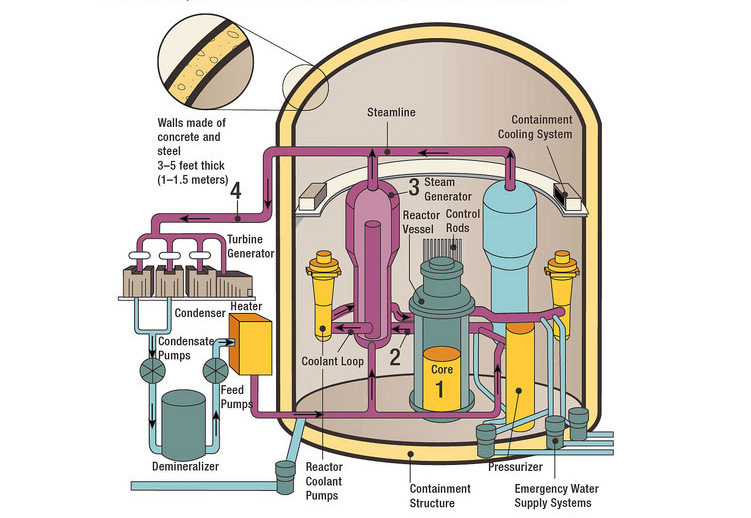Pressurized Water Reactors
Typical Pressurized-Water Reactor
How Nuclear Reactors Work
In a typical design concept of a commercial PWR, the following process occurs:
- The core inside the reactor vessel creates heat.
- Pressurized water in the primary coolant loop carries the heat to the steam generator.
- Inside the steam generator, heat from the primary coolant loop vaporizes the water in a secondary loop, producing steam.
- The steamline directs the steam to the main turbine, causing it to turn the turbine generator, which produces electricity.
The unused steam is exhausted to the condenser, where it is condensed into water. The resulting water is pumped out of the condenser with a series of pumps, reheated, and pumped back to the steam generator. The reactor's core contains fuel assemblies that are cooled by water circulated using electrically powered pumps. These pumps and other operating systems in the plant receive their power from the electrical grid. If offsite power is lost, emergency cooling water is supplied by other pumps, which can be powered by onsite diesel generators. Other safety systems, such as the containment cooling system, also need electric power. PWRs contain between 150-200 fuel assemblies.
See also our animated diagram.
Page Last Reviewed/Updated Thursday, February 09, 2023
Page Last Reviewed/Updated Thursday, February 09, 2023


